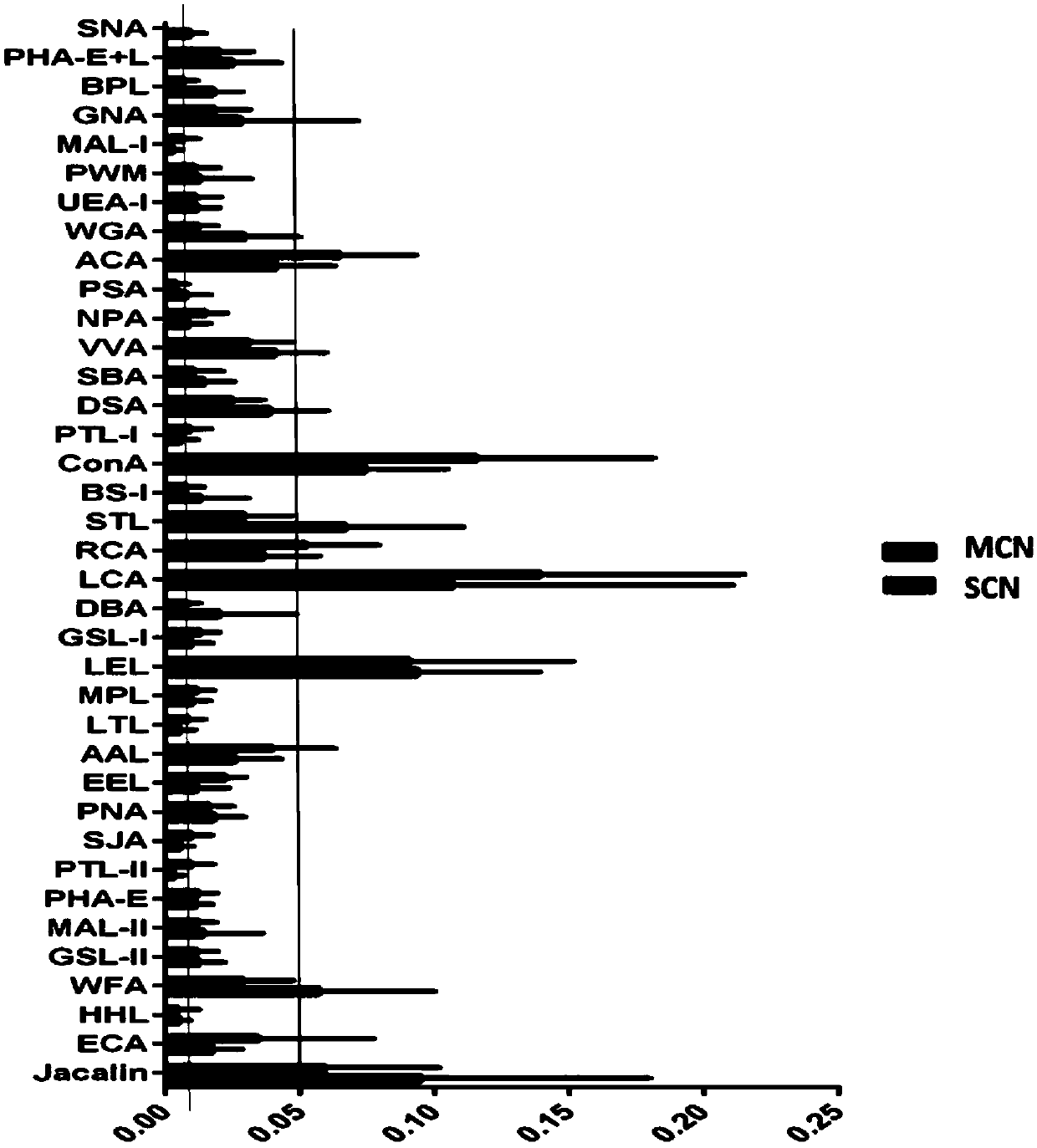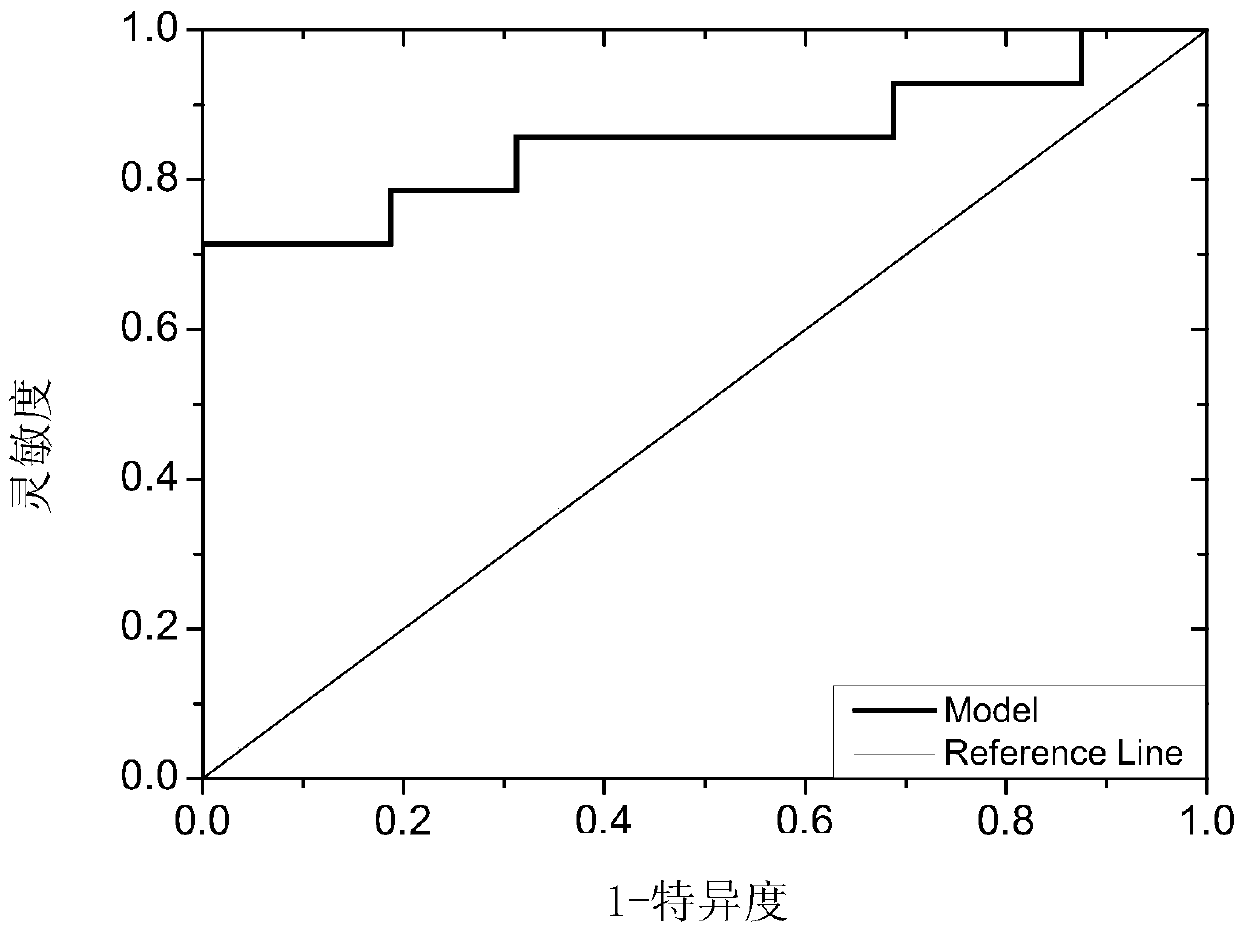Application of sugar chains recognized by lectin group in differentiating pancreatic mucinous cystic neoplasms from pancreatic serous cystic neoplasms
A lectin and mucus technology, applied in the biological field, can solve the problems of specificity, low sensitivity, low accuracy, and accuracy retention
- Summary
- Abstract
- Description
- Claims
- Application Information
AI Technical Summary
Problems solved by technology
Method used
Image
Examples
Embodiment 1
[0059] Example 1. Glycosylated protein sugar chains used to distinguish between MCN patients and SCN patients
[0060] (1) Research objects and sample collection
[0061] Research objects: approved by the hospital ethics committee (ethics number: S2014-108-01), excluding the history of malignant tumors; severe cardiopulmonary insufficiency; coagulation dysfunction; confirmed by imaging in the early stage. Patients with PCNs were treated in the surgical ward, including 17 confirmed MCN patients (into the MCN group) and 18 SCN patients (into the SCN group).
[0062] At least 0.2 ml of cyst fluid was collected and placed on ice immediately, and protease inhibitors (1 μL per 0.1 ml of cyst fluid) were added to prevent protein degradation.
[0063] (2) Protein treatment and fluorescent labeling of pancreatic cystic tumor cyst fluid
[0064] The corresponding volume (containing 100 μg total protein) and 100 μL 0.1M Na 2 CO 3 (pH 9.3) buffer solution was mixed, the mixture was in...
PUM
| Property | Measurement | Unit |
|---|---|---|
| Sensitivity | aaaaa | aaaaa |
Abstract
Description
Claims
Application Information
 Login to View More
Login to View More - R&D
- Intellectual Property
- Life Sciences
- Materials
- Tech Scout
- Unparalleled Data Quality
- Higher Quality Content
- 60% Fewer Hallucinations
Browse by: Latest US Patents, China's latest patents, Technical Efficacy Thesaurus, Application Domain, Technology Topic, Popular Technical Reports.
© 2025 PatSnap. All rights reserved.Legal|Privacy policy|Modern Slavery Act Transparency Statement|Sitemap|About US| Contact US: help@patsnap.com



